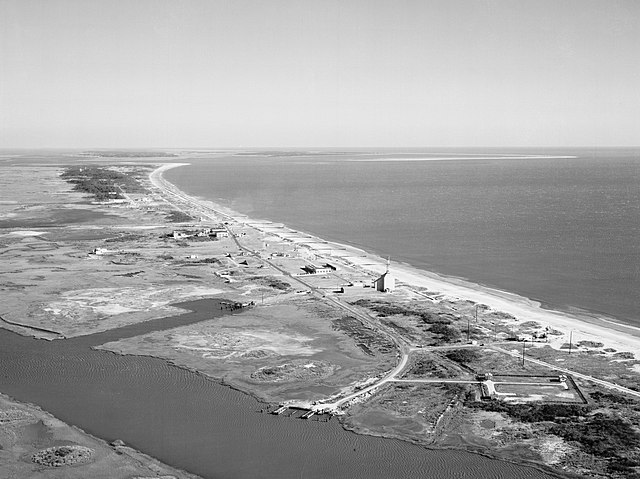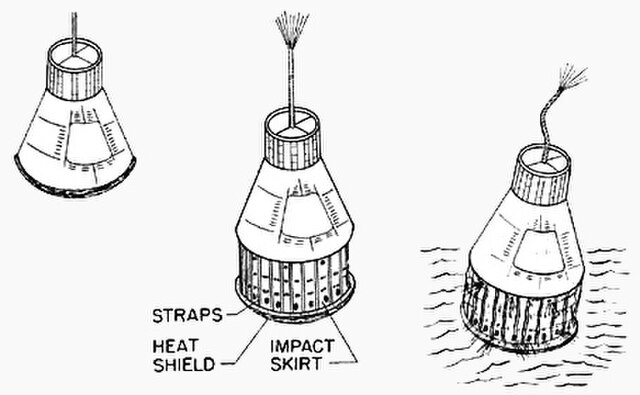Mercury-Atlas 7, launched May 24, 1962, was the fourth crewed flight of Project Mercury. The spacecraft, named Aurora 7, was piloted by astronaut Scott Carpenter. He was the sixth human to fly in space. The mission used Mercury spacecraft No. 18 and Atlas launch vehicle No. 107-D.
Carpenter entering his MA-7 capsule, Aurora 7
Malcolm Scott CarpenterProject Mercury Crewed missions← Mercury-Atlas 6Mercury-Atlas 8 →
Astronaut Scott Carpenter leaving White Room for launch site to begin Mercury-Atlas 7 (MA-7) mission.
MA-7 launch
Project Mercury was the first human spaceflight program of the United States, running from 1958 through 1963. An early highlight of the Space Race, its goal was to put a man into Earth orbit and return him safely, ideally before the Soviet Union. Taken over from the US Air Force by the newly created civilian space agency NASA, it conducted 20 uncrewed developmental flights, and six successful flights by astronauts. The program, which took its name from Roman mythology, cost $2.68 billion. The astronauts were collectively known as the "Mercury Seven", and each spacecraft was given a name ending with a "7" by its pilot.
Wallops Island test facility, 1961
Mercury Control Center, Cape Canaveral, 1963
Retropack: Retrorockets with red posigrade rockets
Landing skirt (or bag) deployment: skirt is inflated; on impact the air is pressed out (like an airbag)








